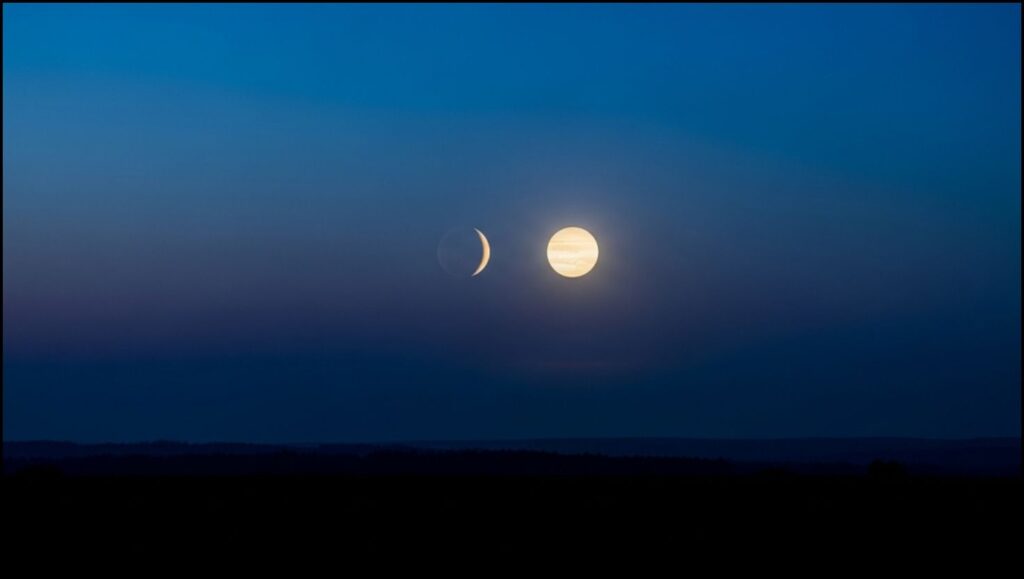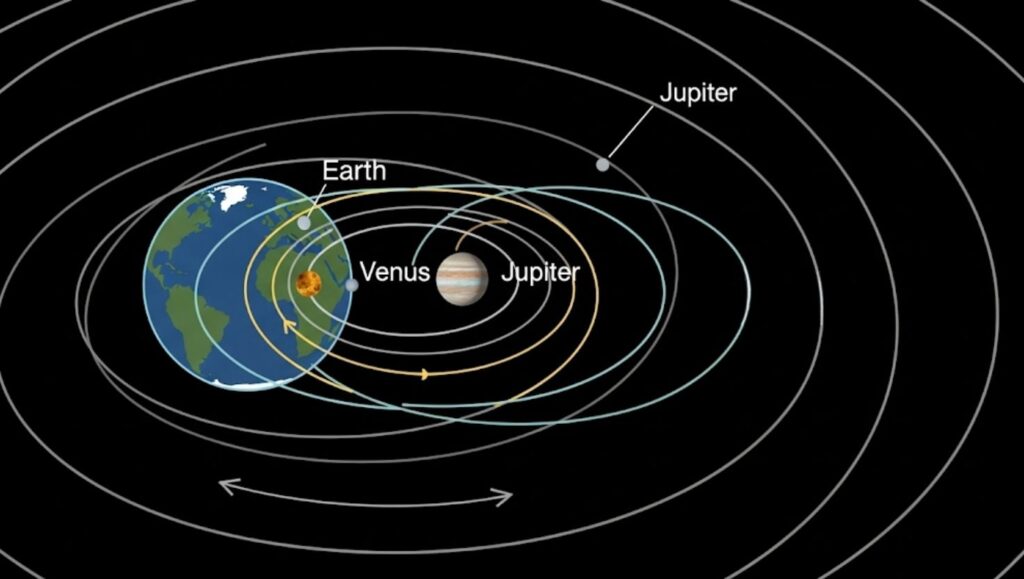Skywatchers are in for a celestial treat this week as Jupiter and Venus, the two brightest planets in our sky, appear in a striking close approach before dawn. This notable astronomy event will be easily visible to the naked eye globally, offering a brilliant spectacle in the eastern sky just before sunrise.

Key Viewing Information: Planetary Conjunction
| Key Fact | Details |
| What to See | A close visual pairing of the planets Jupiter and Venus. |
| Peak Viewing | The pre-dawn hours (approx. 45-60 minutes before local sunrise). |
| Location | Look toward the eastern sky. |
| Equipment | Not required; easily visible to the naked eye. |
How to See the Jupiter and Venus Pairing
Beginning this week, stargazers across the world can witness a brilliant pairing of Jupiter and Venus. The two planets will appear remarkably close together in the morning sky, creating a sight that is both beautiful and easily accessible.
To view the event, observers should look toward the eastern horizon approximately 45 to 60 minutes before their local sunrise. Venus will be the more dazzling of the two, shining with an unmistakable, brilliant white light. According to data from NASA, Venus currently shines at a magnitude of approximately -4.0, making it the brightest object in the sky after the Moon. Jupiter, while slightly less brilliant at a magnitude of -2.1, will still appear as a powerfully bright, steady light just near Venus.
“This is a wonderful opportunity for people to connect with the night sky, often without leaving their city,” said Dr. Michael Brown, an astronomer at the California Institute of Technology (Caltech). “You don’t need a telescope, you don’t need special equipment. You just need to wake up a little early and look east.”
The planets will be situated in the constellation Gemini. For viewers in the Northern Hemisphere, they will appear in the east-northeastern sky, while those in the Southern Hemisphere should look toward the northeast.
The Science Behind the Celestial Meeting
While they appear close from our vantage point, this event is a line-of-sight illusion. In reality, the two planets remain hundreds of millions of miles apart. This phenomenon is known as a planetary conjunction.
A conjunction occurs when two or more celestial bodies share the same right ascension or ecliptic longitude in the sky, as observed from Earth. Dr. Preeti Singh, a planetary scientist with the European Space Agency (ESA), explains the mechanics.
“Imagine you are standing in a large field watching two cars drive on separate, circular tracks at very different distances from you,” Dr. Singh stated in an interview. “At certain moments, from your specific perspective, one car will appear to pass very close to the other. The planets are doing the same thing as they follow their own vast orbits around the sun.”
Venus is the second planet from the Sun, while Jupiter is the fifth. Their orbits mean that from our viewpoint on Earth, they periodically appear to align. While these conjunctions are not exceptionally rare, close and bright pairings like this one are always a noteworthy astronomy event.

Enhancing Your View with Binoculars
While the pairing of Jupiter and Venus is a spectacular naked-eye sight, using a simple pair of binoculars can dramatically enhance the experience. Binoculars will make the colors and brightness of the planets more distinct.
More importantly, binoculars may allow you to see Jupiter’s four largest moons, known as the Galilean moons: Io, Europa, Ganymede, and Callisto. They will look like tiny pinpricks of light in a straight line on either side of Jupiter.
“Seeing the Galilean moons for yourself with just a pair of binoculars is a profound experience,” an article from Sky & Telescope magazine noted. “You are witnessing the same sight that led Galileo Galilei to realize that not everything orbited the Earth, which was a pivotal moment in the history of science.”
Through a small telescope, viewers may even be able to discern the phase of Venus, which can appear as a tiny, thick crescent or a “gibbous” shape, similar to a not-quite-full moon.
This celestial event is visible to observers worldwide, though the exact orientation of the planets may differ slightly depending on the viewer’s latitude. The key to a successful viewing is a clear, unobstructed view of the eastern horizon and skies free from significant cloud cover or light pollution. Resources like Time and Date or mobile apps like Stellarium can provide precise rise times for your specific location.
The planets will remain close in the morning sky for several days before they appear to drift farther apart each morning as they continue their respective journeys around the sun. This slow celestial dance is a regular and predictable part of our solar system’s grand mechanics, offering a consistent source of wonder.
Annual Perseid Meteor Shower to Peak, Promising Dazzling Celestial Display
